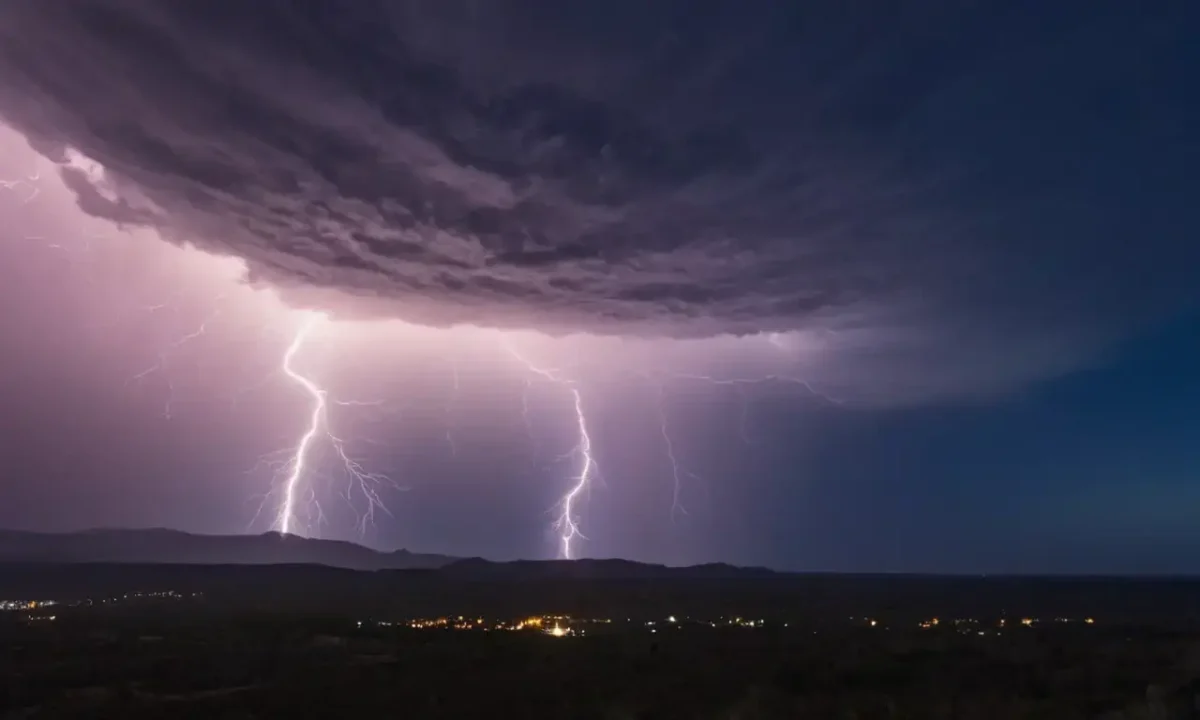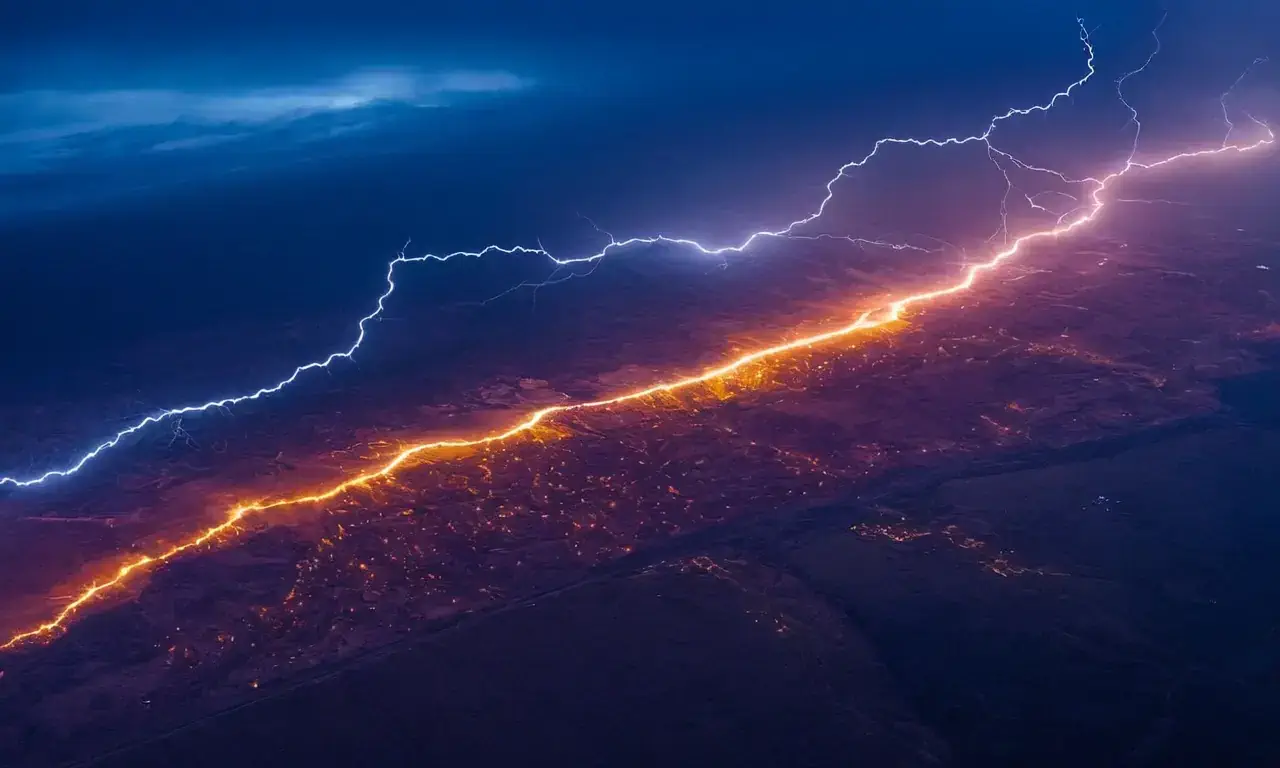
Lightning Strikes: A Journey Through Ionized Air

Lightning, a dramatic display of nature's raw power, has fascinated humanity for centuries. This phenomenon involves the sudden discharge of static electricity between clouds and the ground, releasing immense energy in the form of light, heat, and sound. Understanding how lightning strikes occurs requires delving into the intricate science of electrical discharges and atmospheric conditions. This article explores the fascinating process of lightning formation, focusing on the role of stepped leaders – ionized air paths that guide the flow of electricity from cloud to Earth.
The objective of this article is to provide a comprehensive overview of lightning strikes, explaining the underlying scientific principles, factors influencing their occurrence, and the safety precautions necessary when encountering thunderstorms. We will also discuss the environmental impacts of lightning and ongoing research efforts aimed at understanding and predicting these natural phenomena. By delving into these aspects, we aim to enhance our appreciation for the power of nature and equip readers with knowledge to navigate potentially dangerous situations.
The Science Behind Lightning Strikes
Lightning is a dramatic manifestation of electrical discharge within the atmosphere. This discharge occurs when there's a significant imbalance of electric charge between different parts of a cloud or between a cloud and the ground. The process begins with charges separating within the cloud, often due to collisions between ice crystals and hailstones. These collisions create static electricity, leading to an electrical potential difference that builds up over time.
When this potential difference becomes large enough, it overcomes the insulating capacity of air, causing a sudden discharge of electricity. This discharge is what we observe as lightning. The path of least resistance for this electric current is often through the shortest route available, which can be a channel within the cloud or a direct connection to the ground.
The journey of an electrical charge from cloud to ground involves several stages and processes. One crucial aspect is the formation of stepped leaders, which play a critical role in initiating lightning strikes. These stepped leaders are essentially ionized air paths that extend downwards from the cloud, branching out like a tree's roots.
Ionization of Air and Stepped Leaders
The process of ionization involves the separation of electrons from atoms or molecules, creating charged particles. This occurs when an electric field becomes strong enough to overcome the natural resistance of air molecules. In lightning, this happens due to the rapid buildup of electrical potential within a thunderstorm cloud.
When the electric field strength exceeds a certain threshold, it causes air molecules to become ionized. This means that electrons are stripped away from atoms, creating positively charged ions and negatively charged electrons. These charged particles then interact with each other, forming conductive pathways for the flow of electricity.
The formation of stepped leaders is directly linked to this ionization process. As electrical charges build up within a thunderstorm cloud, they create an electric field that extends downwards from the cloud's base. This field interacts with atmospheric conditions like temperature and humidity, influencing the path of ionized air.
One key factor in stepped leader formation is the shape of the electric field. The electric field lines tend to curve towards the ground due to the Earth's curvature. This curvature creates a "stepped" appearance as the leaders grow and branch out from the cloud base. These steps are essentially conductive paths that allow for the flow of electricity from the cloud to the ground.
Factors Influencing Lightning Formation
Several factors contribute to the formation of lightning strikes, influencing both the initiation process and the path of the electrical discharge. Understanding these factors is crucial for comprehending how lightning occurs and predicting its occurrence.
One key factor is atmospheric instability. This refers to the presence of temperature differences within a layer of air. When warm air rises rapidly, it creates an area of low pressure that can lead to thunderstorm development. These thunderstorms are often associated with strong updrafts, which further contribute to the formation of stepped leaders.
Another important factor is moisture content. Water vapor in the atmosphere plays a crucial role in lightning formation. The presence of water molecules allows for greater ionization and conductivity, making it easier for electrical discharges to occur. This moisture also contributes to the development of thunderclouds, as warm air rises and cools, leading to condensation and cloud formation.
Furthermore, atmospheric pressure can influence lightning formation. Areas with high atmospheric pressure tend to have less instability, reducing the likelihood of thunderstorms. Conversely, areas with low atmospheric pressure are more conducive to thunderstorm development due to the presence of updrafts and downdrafts.
Ground Currents and Electrical Discharge

Once a stepped leader reaches the ground, it creates a conductive path for the flow of electricity from the cloud. This process is known as electrical discharge, where electrons move from the negatively charged area of the cloud towards the positively charged ground. The electrical current flows through this pathway, creating the visible flash of lightning we observe.
The electrical discharge associated with lightning can be quite powerful. It releases a massive amount of energy in the form of light and heat, generating intense sound waves that create thunder. This phenomenon is due to the rapid expansion of air heated by the electric current. The expanding air creates pressure waves that travel through the atmosphere, causing the characteristic booming sound we associate with lightning.
The path of this electrical discharge can vary depending on several factors. One factor is the shape and curvature of the Earth. The Earth's curvature influences the direction of the electrical current flow, leading to different types of lightning strikes. Another factor is the presence of obstacles like trees or buildings, which can alter the path of the discharge.
Types of Lightning and Their Characteristics
Lightning comes in various forms, each with unique characteristics and causes. Understanding these different types helps us appreciate the complexity of this natural phenomenon.
One common type is intracloud lightning, which occurs within a single cloud. These strikes are often associated with strong updrafts and downdrafts within the cloud, leading to rapid changes in electrical potential. Another type is cloud-to-cloud lightning, where a discharge occurs between two separate clouds. This type of lightning can be particularly powerful and destructive, as it involves large amounts of energy being transferred between clouds.
Another important category is ground lightning. This type of lightning occurs when the electrical current flows from the cloud to the ground directly. Ground lightning strikes are often associated with thunderstorms that develop near tall structures like trees or buildings. These strikes can be particularly dangerous due to their proximity to human settlements and infrastructure.
Safety Precautions During Thunderstorms
Thunderstorms pose a significant safety hazard, as lightning is a powerful force of nature. It's crucial for individuals to take precautions during these weather events to minimize risks. One important step is to seek shelter indoors whenever thunder roars or there are signs of approaching storms. This includes staying away from windows and metal objects that can conduct electricity.
Another essential safety measure is to avoid contact with water, as it's a common pathway for lightning strikes. If caught outdoors during a thunderstorm, seek shelter in a hard-top vehicle or an enclosed structure like a building or a car garage. It's also important to stay away from tall objects that could act as conductors, such as trees and power lines.
Finally, remember that lightning can strike even if you don't see it. Therefore, always be aware of your surroundings during thunderstorms and take necessary precautions to ensure your safety. By following these guidelines, individuals can minimize their risk of being struck by lightning and enjoy the beauty of nature without putting themselves at unnecessary danger.
Environmental Impacts of Lightning
Lightning strikes have significant environmental impacts that extend beyond just causing damage to structures and vegetation. These discharges release a variety of chemicals into the atmosphere, influencing air quality and contributing to atmospheric processes.
One notable impact is on air composition. During lightning strikes, various gases are ionized, including nitrogen and oxygen. This ionization process can alter the chemical balance of the atmosphere, potentially affecting ozone levels and other atmospheric constituents. Additionally, lightning discharges release small amounts of radioactive isotopes into the environment, which can have long-term effects on ecosystems.
Furthermore, lightning plays a role in cloud formation. The electrical discharge from lightning can ionize water droplets within clouds, leading to the formation of new cloud cells. This process contributes to the overall cycle of atmospheric circulation and weather patterns. However, it's important to note that this effect is often subtle compared to other factors influencing cloud development.
Conclusion
Lightning is a fascinating natural phenomenon with significant implications for both our environment and human safety. Understanding its formation, characteristics, and impacts helps us appreciate the complexity of nature while taking necessary precautions during thunderstorms. By learning more about lightning, we can better protect ourselves and contribute to a safer and more sustainable future.
Leave a Reply





Related Links